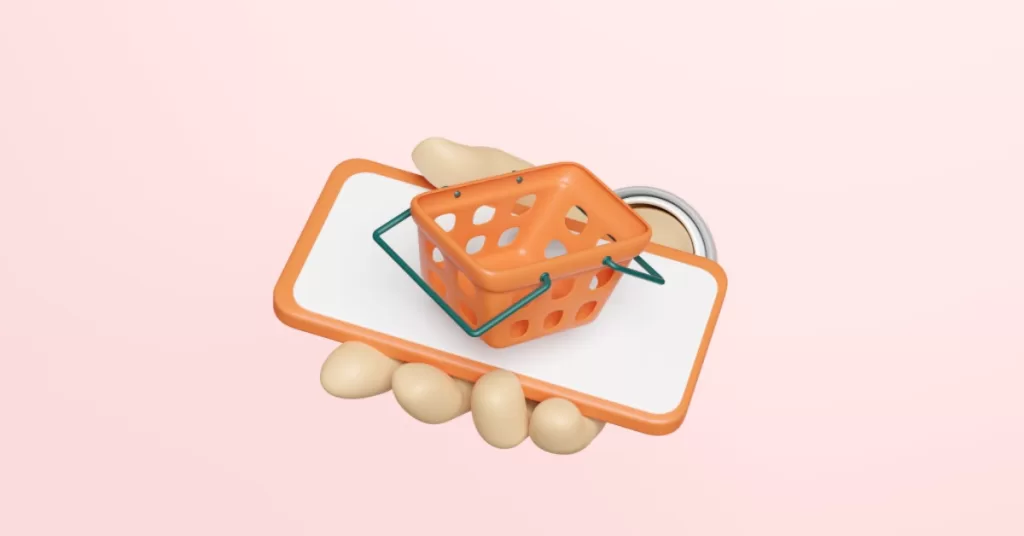User-generated content ads or UGC ads have exploded in popularity in the past years. And they did because they usually convert well. This approach takes the authentic, approachable, and relatable user-generated content and transforms it into ads.
By understanding what makes a good UGC ad, and what makes the audience tick, you can make your ads stand out, drive more engagement, and boost your conversions.
Where to Start With UGC Ads
Creating a compelling UGC ad is definitely easier said than done. But the process and the idea behind it are not rocket science. As any good video ad, UGC ads essentially have four key elements:
Hook
You want your ad to grab the attention of the user instantly. This is your first impression consisting of the first 3-5 seconds which will make the user stop scrolling and watch the rest of the video. The hook can come in many different forms such as an interesting, absurd, or unbelievable fact, a funny anecdote, a captivating visual, or a thought-provoking question.
Problem
Once you’ve got the audience’s attention, it’s time to introduce the problem they can relate to. This usually consists of the next 10-15 seconds of the video. Here, you will have to think why did you create the product you’re selling? What kind of issues does your audience have that you are trying to solve? The key is to resonate with the users and make them feel understood. You can test different problems and see which one catches their eye the most.
Solution
Then, it’s time to present the solution, which is your product. There is no clear guideline on how long this part should be, but I recommend keeping it under 20 seconds. Highlight the benefits and features that make your product stand out, but do not overwhelm your audience with all your unique selling points (USPs). Try to keep it clear and concise. If you have many USPs, consider creating multiple ads showcasing various sets and see which ones resonate better with your audience.
CTA and Outro
A strong call to action (CTA) is essential to drive conversions. After you have worked so hard to get the users’ attention and keep them watching the video, you would be leaving money on the table if you didn’t tell them what to do next. So you need to urge them to buy, subscribe, sign up, visit your website, or any other action you are looking for. The outro of the video should reinforce the brand message and should leave a lasting impression. Consider ending the video with a memorable tagline or a strong visual.
Additional tips:
- Keep it short. People have short attention spans.
- Try different ad variations. Testing is crucial as there is no one-size-fits-all approach. Try resting variations of your ad by combining different hooks, problems, USPs, and CTAs.
- Track your performance. Always analyze the results of the campaign and check which ad worked best. After that, try to figure out why it did well so you can use that info in future ads.
Choose the Platform You Want to Advertise On

Now that you have a solid understanding of the core principles of what makes a good UGC ad, it’s time to decide where to advertise your creations. The two most popular platforms are Meta (Facebook and Instagram) and TikTok. Both platforms are good, but they are used to reach different audiences who react to different types of content.
Understanding these differences will help you determine which is the best fit for your campaign. So, let’s break down the key factors to consider when choosing between Meta and TikTok.
| Meta | TikTok |
| Longer ad formats | Usually under 60 seconds |
| Older audience | Younger audience |
| You can test calmer, slower-paced videos | More dynamic, fast-paced content |
| More variety in terms of good hooks | Hooks need to be bold and scroll-stopping |
| With more variables that could work, you need to test many UGC ads to find one that works well | Highly dependent on trends and on which type of format works best in a given time frame |
If you are just starting with UGC ads, I suggest advertising first on Meta. After you see some results and have some winning ads, you can slowly shift to TikTok. The audience on Meta is a little bit more forgiving and there is more room for error when it comes to the video elements. With TikTok, because of the fast pace at which people consume content, it is harder to get their attention to watch even a 20 or 30-second video.
UGC Ads Performance Assessment
When it comes to assessing the performance of your UGC Ads, there are a few things you should look at. Remember, the whole idea is that you need to test as many ideas as possible.
So let’s correlate consumer behavior with the ad components.
Scroll stoppers – hooks
The most accurate way to measure if you have gotten the user’s attention is by looking at whether you have convinced them to stop scrolling and watch the beginning of the video. And the very first thing they see in the video is the hook.
The metric you can use to determine the effectiveness of your hook is the hook rate.
Hook rate = 3-second video views/impressions
Generally, a good hook rate sits at around 30%. If you constantly get a lower percentage, you should try testing different hooks and see which one is working for your type of product or service.
Some examples of hooks that you can try are:
- ‘3 reasons why’ – a very easy place to start from. After you hook the audience with a simple statement, you proceed to present 3 USPs for your product or service.
- Reverse psychology – this is similar to ‘3 reasons why’, but you start from a negative statement (e.g. ‘‘3 reasons why you should not buy this’). Then you proceed to present 3 USPs in a funny way to make the audience aware of the sarcasm.
- ‘What I bought vs what I’ve got’ – a simple way of showcasing the product in use.
- Storytelling – just straight-up telling a short story about a problem and how the product fixed it.
- “Why [Product/Brand] is a Must-Have for Every [Target Audience]!” – this is another good segue to present a problem followed by the USPs.
Keeping their attention – hold rate
Having a good hook tells you you’re on the right path, but it’s only the beginning. After getting the user’s attention, you also need to keep it. To measure this, you can use the hold rate metric.
Hold rate = ThruPlay / impressions
A ThruPlay tells you the number of times your video was played to completion, or for at least 15 seconds.
A good benchmark for the hold rate is around 8-12%. If you hit this consistently, you know that your ads are resonating with your audience. Otherwise, you need to work on your problem and solution parts of the video.
To improve the hold rate, you can test different problems your customers are facing – not all problems are equally relevant. And try presenting different solutions to see which ones are better to advertise.
However, you can also try:
- Making quicker cuts: try adding jump cuts in or out on the person that’s in the frame or add a b-roll every 2 seconds or so. This will keep your audience more engaged and increase the watch time.
- Add multiple angles: using different angles of the same thing can create the illusion of dynamism. Think about podcasts. They are fairly simple and static. But good podcasters use multiple cameras so they can edit the videos showcasing multiple angles: wide shots, close-ups, etc.
- Refer back to the hook: if you have a good hook rate, you already know that people want to find out more about it. If your video has nothing to do with what you presented in your hook, they will continue scrolling. So try to refer back to your hook when stating the problem to see if it fixes the problem.
- Follow up with another hook: if you have multiple ads with high-performing hooks, you can try including more than one hook in an ad, or go nuts and make a compilation out of them.
There are no written rules about what you can and can’t do with your UGC ads. So you might as well try any crazy idea you can think of.
Make them take action – CTA’s and CTRs
If people are watching your video ads, but are not taking action, you have a problem with the call to action.
Maybe the video is good at getting their attention, explaining the products, and getting them excited about it, but the instructions for the next steps are not clear.
To drive action, you need to have a clear and concise CTA, and, when it makes sense, with a sense of urgency. If you run a limited-time promotion, mention it, as it will increase your CTR.
Going through with the purchase – landing pages
Regardless of how good your video is, that alone will not convince people to buy your product or service. For that, you need to have a well-crafted landing page.
Ecommerce landing pages and SaaS landing pages are slightly different, but they follow the same general rules:
- Have headlines that grab the user’s attention
- Include benefit-driven product descriptions
- Make sure your copy is clear and scannable
- Use high-quality product images and/or videos
- Have a mobile-friendly design
- Limit the distractions on your landing page



